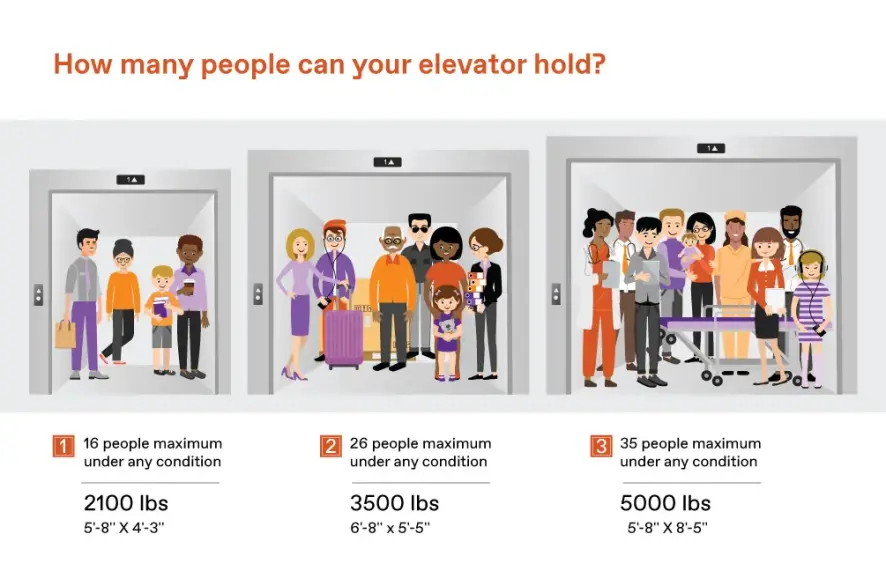How Is Elevator Capacity Calculated?
Designing a building is time consuming and rewarding all at once. Many details like the color of the trim or the design of lighting fixtures in the bathroom suddenly become all you can think about. This is because each little decision that you make will affect the building’s look and the story you tell with it.
Elevators have been called the backbone of a building and can help convey an overall aesthetic to passengers. When it comes to deciding on an elevator, you’ll find they come in varying shapes and sizes. It can be easy to get caught up in the fun choices — from cab wall colors to enhanced technology features.
But one detail that may not have crossed your mind is how much weight your elevator can hold.
This one factor can fully alter the type of elevator that you’ll want for your building. Functionality and safety are planned before interior design — so understanding how many people can fit in your building’s elevator is a priority.
Thankfully, there’s no need to be unsure about anything related to elevators because TK Elevator has great resources on all aspects of vertical transportation. So, let’s take a look at how elevator capacity is calculated and why it’s critical to your building’s success.
What is a rated load?
In order to begin planning out your elevator’s design, you must first determine its rated load.
The first thing to understand is that the absolute maximum weight that an elevator can carry is referred to as its “rated load.” You might see this term in the vertical transportation industry, and it’s important to remember that it’s synonymous with “capacity.” There is no difference between the two as they are one and the same.
The typical capacity of an elevator is between 2100 lbs. to 5000 lbs.
How is elevator capacity calculated?

ASME A17.1 elevator code requires that there must be a close correlation between the size of the elevator and its capacity. To put this in simpler terms, the bigger the elevator cab is, the greater the weight it can hold must be.
Although elevator capacity is typically calculated based on the size of the elevator, it is not the only criterion that must be taken into consideration. Other factors such as the height of the building, how the cab is hoisted or the materials it’s made with can also affect the weight limit.
For example, smaller residential buildings will most likely have elevators that can only hold a small amount of weight or fewer passengers. In contrast, an elevator in a tall commercial building might have a higher limit based on the number of materials and passengers it needs to transport daily.
How is the number of people an elevator can hold calculated?
There are three different ways to calculate the number of people that an elevator cab can safely carry.
1. Max Loading
Max loading refers to the maximum number of people that an elevator can hold. It is what the elevator’s capacity is based on but is only to be used under extreme circumstances. It would not be a very comfortable ride if you were at max load.
To calculate the max load, you will need to allow 1.5 square feet of space per person.

2. Normal Loading
The recommended number of people that can be in an elevator is called normal loading. Even though it is referred to as normal, most people see this as a crowded elevator and will wait for the next elevator if the traffic is heavy. The recommended goal is for the elevator to be able to move 10-12% of building’s population in five minutes.
To calculate the normal load, you will need to allow 2.3 square feet of space per person.
3. Special Loading
Just as the name implies, special loading is for a different circumstance than the two types of loading above. It is for buildings that have passengers who may require items or equipment that will take up large amounts of space. This reduces the number of people that the elevator can carry.
To calculate the special load, you will need to allow for about half of normal loading.
For more information on elevator capacity calculations and how to get the right elevator for your building, contact your local TK Elevator branch.
 United States
United States

